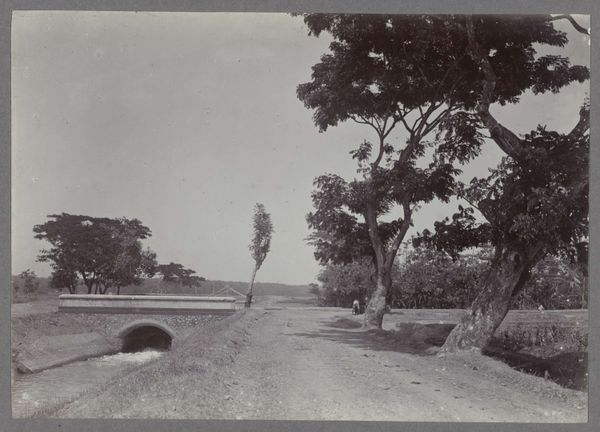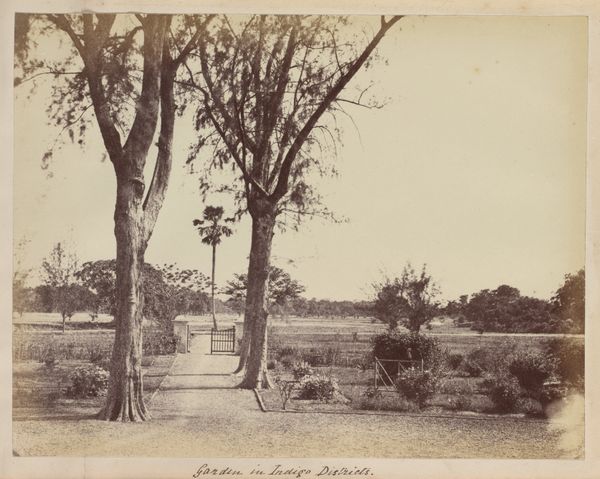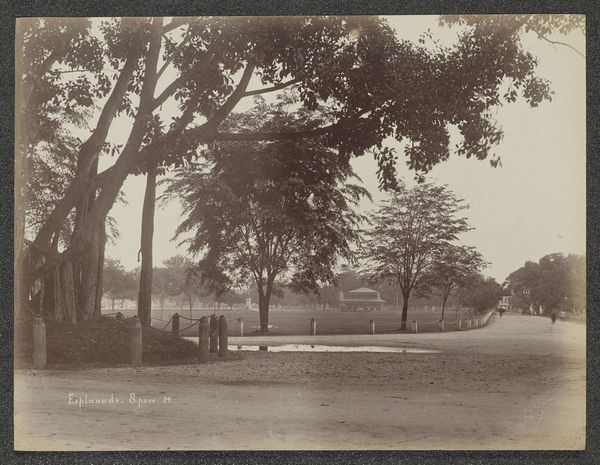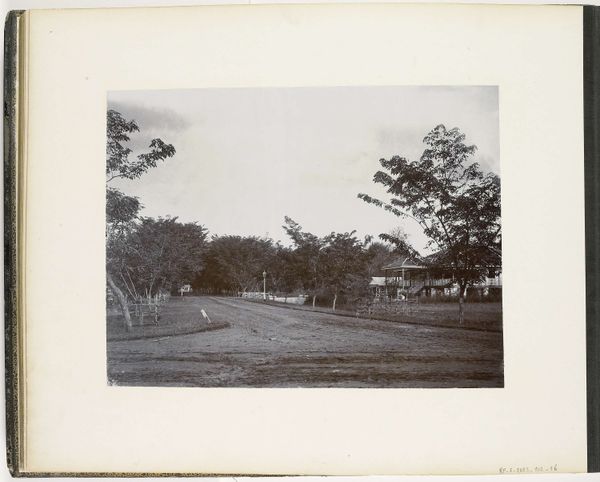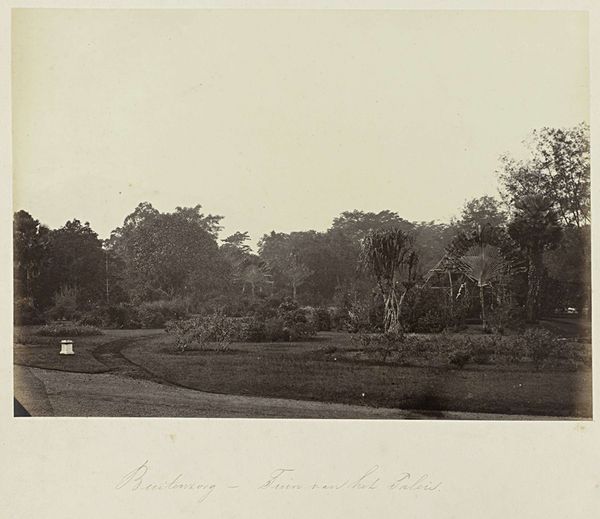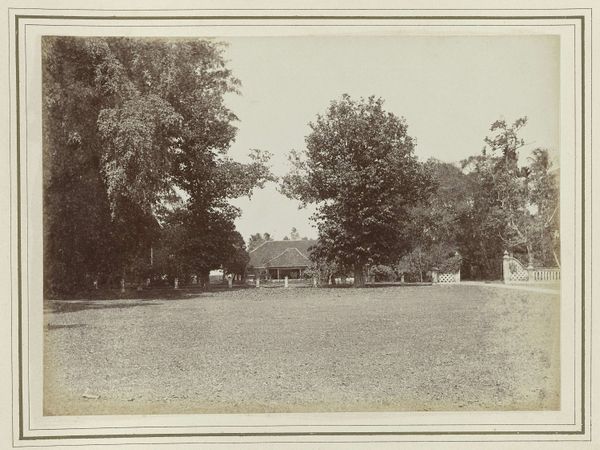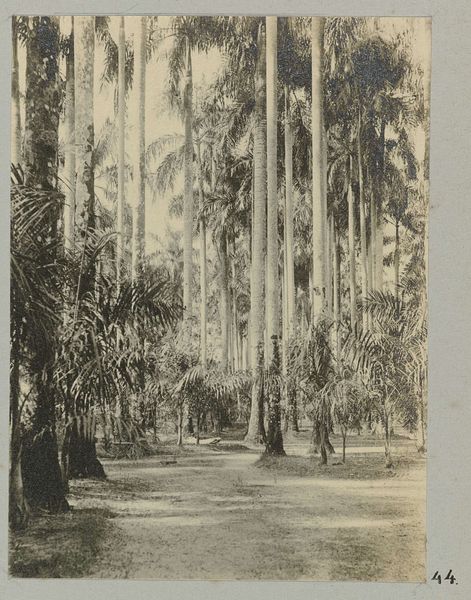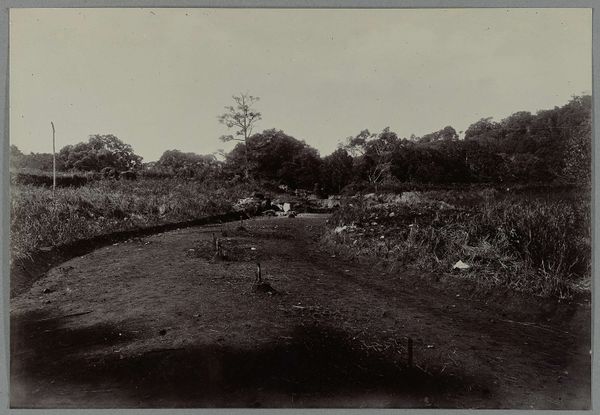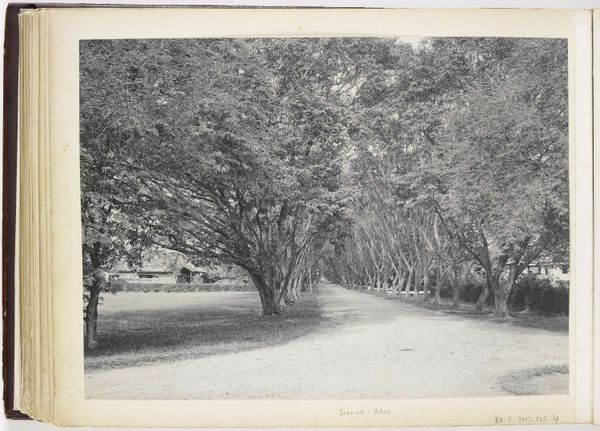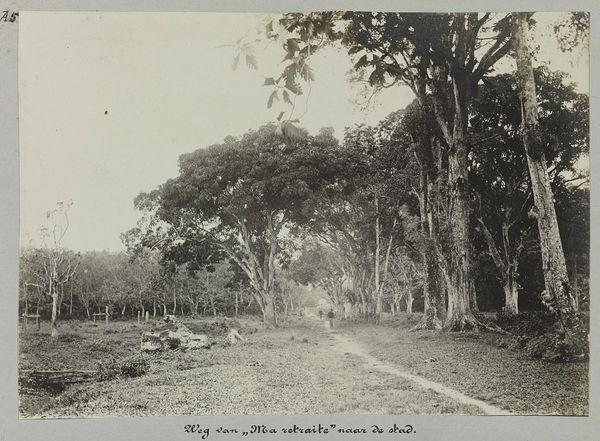
Vrouw en een jongen in de botanische tuin van (vermoedelijk) Singapore c. 1870 - 1900
0:00
0:00
grlambertco2
Rijksmuseum
photography
#
pictorialism
#
sculpture
#
landscape
#
photography
#
orientalism
Dimensions: height 209 mm, width 274 mm
Copyright: Rijks Museum: Open Domain
Curator: What a serene image! We’re looking at "Vrouw en een jongen in de botanische tuin van (vermoedelijk) Singapore", an albumen print created sometime between 1870 and 1900 by G.R. Lambert & Co., currently residing here at the Rijksmuseum. Editor: There’s something quite melancholic about its tonal range and composition. A rather picturesque scene—expansive lawn, meticulously arranged flora—yet rendered in this muted sepia that imparts a distinct air of detachment. Curator: Precisely! Considering the conventions of orientalist photography, this staged "natural" setting, featuring a woman and child, perpetuates the colonial gaze. We're presented with an idyllic image, yet the presence of these figures normalizes a power dynamic inherent to the colonial project. Their presence naturalizes the landscape, implying ownership. Editor: Indeed. The relationship between light and shadow constructs an undeniable flattening of space. The repetition of circular forms in the shrubbery, countered by the verticality of the palm, achieves a harmonious balance… a calculated one, I might add. Curator: The image itself likely circulated widely, reinforcing existing imperial ideologies back home. By understanding photography in the context of colonialism, we realize such imagery wasn’t benign, but a tool that upheld Western dominance. Editor: The tonal gradations create an illusion of depth. Notice the sharp details in the immediate foreground which contrast the ethereal quality of trees in the distance. The photographer meticulously controlled the vantage point and focal plane to guide the observer’s vision. Curator: And perhaps understanding pictorialism is also key. It attempts to legitimize photography by utilizing an painterly aesthetic and imbuing the subject matter with symbolic, easily digestible allegories that cater to western expectations. Editor: Reflecting on the photographic composition, the convergence of formal devices establishes a fascinating relationship. It serves as a testament to the inherent aesthetic potential immanent in the artistic choices, despite their contextual underpinnings. Curator: Indeed, engaging with this photo requires confronting its troubled position within both art history and colonial history, forcing us to wrestle with the ongoing legacies of those intersecting powers.
Comments
No comments
Be the first to comment and join the conversation on the ultimate creative platform.
